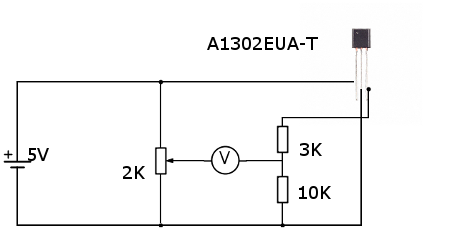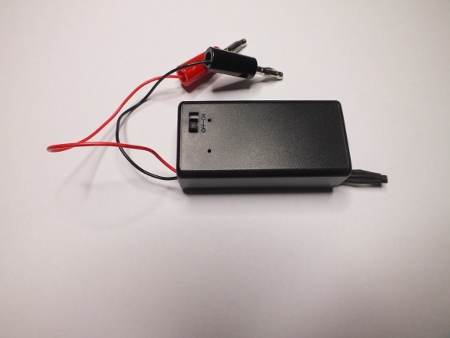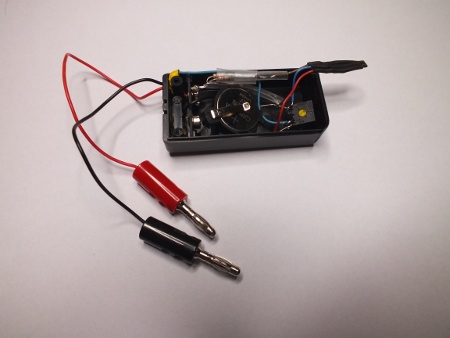Have you ever wanted to find out how strong a magnet really was, or how the strength of the magnetic field varied as you changed the distance from the magnet. Devices used to measure the local magnetic field are called magnetometers or gaussmeters. There are commercially available meters for this, but they are usually a bit expensive for some experimenting.
The availability of inexpensive hall effect sensors have made is possible to build your own magnetic field meters cheaply. Measure Your Magnetism and Build your own Gaussmeter articles have a nice example circuit using hall effect sensor.
I decided to make my own circuit to do the same using a little bit different sensor component. I used Allegro A1302EUA-T hall sensor that I bought from Elfa (Hall-anturit SIL-3, A1302EUA-T). That IC is powered from 5V power source (needs 10 mA) and has output of 1.3 mV/G (= 13 mV/mT). The sensor hall sensor A1302EUA-T costs around three Euros. High precision in output levels is obtained by internal gain and offset trim adjustments made at end-of-line during the manufacturing process.
The circuit below is my version of magnetic field measurement. The V letter inside the circle means voltage meter. I connected my digital multimeter there. The hall effect sensor is on the right. The resistor on it’s output convert the 13 mV/mT voltage output to 10 mV/mT that is more practical reading on multimeter screen (you can easily figure out the mT value from multimeter reading without doing calculations).

On the left side that 2 kohm trimmer is for zero adjust. The hall sensor output is at around half of the operating voltage when there is no external magnetic field. By setting the trimmer to the same voltage allows you to get exactly 0V reading on the multimeter when there is no magnetic field. Now it is easy to read the magnetic field strength and the polarity from multimeter. When you set the multimeter to millivolts DC range, the reading directly shows you Gauss reading. Just leave out the last digit (millivolt), and you get the the reading in milli-Teslas. Simple and easy. The measurement range is according to datasheet at least +-140 milli-Teslas (1400 Gauss). The adapter can be also used to measure varying magnetic fields by connecting the output to oscilloscope (hall sensor has 20 kHz bandwidth).
I decided to power the circuit with stable 5V power supply because the quiescent voltage output and the magnetic sensitivity, Sens, are proportional to the supply voltage. To get the stable 5V power for the circuit I used a modified version of my Simple 5V power supply. I used LM2936Z-5.0 regulator IC. It is a low-dropout (LDO) 5V regulator in TO-92 case (pretty similar to 78L05 but works with lower input-output voltage difference). I first though of using 9V battery for the power, and I even had a nice case for that battery. But after some thinking I decided to use two 3V lithium batteries as the power source and build the entire circuit inside that 9V battery case. Here is how my project turned out. The banana connectors are designed to be connected to the multimeter.

Here is the view to the dirty details inside the project case.


9 Comments
Alberto Mccaffery says:
Thanks for the post, an interesting read.
Heather Willison says:
My partner and I absolutely love your blog and find almost all of your post’s to be exactly I’m looking for. Do you offer guest writers to write content for you? I wouldn’t mind creating a post or elaborating on a few of the subjects you write regarding here. Again, awesome site!
tomi says:
I have had very few quest written articles on this blog.
So I accept relevant quest posts.
Хоби комплекти says:
May I simply just say what a relief to discover someone who genuinely understands what they’re talking about over the internet. You definitely understand how to bring an issue to light and make it important. A lot more people ought to look at this and understand this side of your story. I was surprised you’re not more popular because you surely possess the gift.
Velleman VTEMF « Tomi Engdahl’s ePanorama blog says:
[...] Anyways being able to measure varying magnetic fields is useful, and this meter is much more more sensitive in that than my DIY magnetic field measurement adapter. [...]
kaos murah says:
Wow! In the end I got a weblog from where I be capable of genuinely take helpful facts regarding my study and
knowledge.
Brigitte G. Dilday says:
Have you ever considered about including a little bit
more than just your articles? I mean, what you say is valuable and everything.
Nevertheless imagine if you added some great pictures
or video clips to give your posts more, “pop”!
Your content is excellent but with pics and
videos, this blog could undeniably be one of the greatest in its
field. Awesome blog!
Tomi Engdahl says:
A Magnetic Field Strength Meter Using An Arduino
https://hackaday.com/2021/04/04/a-magnetic-field-strength-meter-using-an-arduino/
We’re used to Hall effect devices as proximity sensors in mechanical systems, used to provide detection of something that has a magnet attached to it. However it’s easy to forget that the devices that provide a magnet-or-not digital output are only part of the story, and linear Hall effect devices provide a handy way to measure a static magnetic field. It’s something [mircemk] demonstrates, with an Arduino-powered magnetic field strength meter that uses a UGN 3503U Hall effect device.
The circuit is extremely simple, comprising the sensor, an Arduino Nano, and an OLED display. This device is handy because its voltage output has a known relationship to the gauss level the sensor is experiencing, so while the accuracy of its calibration isn’t verified it can at least give a believable reading derived from the Arduino’s ADC.
Arduino Magnetic field strength meter
Use a ratiometric linear Hall effect sensor to build simple Magnetic field strength meter
https://hackaday.io/project/177921-arduino-magnetic-field-strength-meter
Tomi Engdahl says:
Permanent Magnet Gauss Meter Handheld Digital Tesla Meter Magnetic Flux Meter Surface Magnetic Field Test 5% Accuracy
https://www.aliexpress.com/item/1005002115321450.html?src=criteo&albch=criteo_New&acnt=criteo-LF&albcp=157651&device=pc&clickid=65098cce1e0c5a3f761e95744d25f230_1695124685_1005002115321450&aff_fcid=2c23239474f94ea183cdcd15a3d82d81-1695124697163-04448-UneMJZVf&aff_fsk=UneMJZVf&aff_platform=aaf&sk=UneMJZVf&aff_trace_key=2c23239474f94ea183cdcd15a3d82d81-1695124697163-04448-UneMJZVf&terminal_id=a84dd682a66047c694dfe5628f2eb974&afSmartRedirect=y